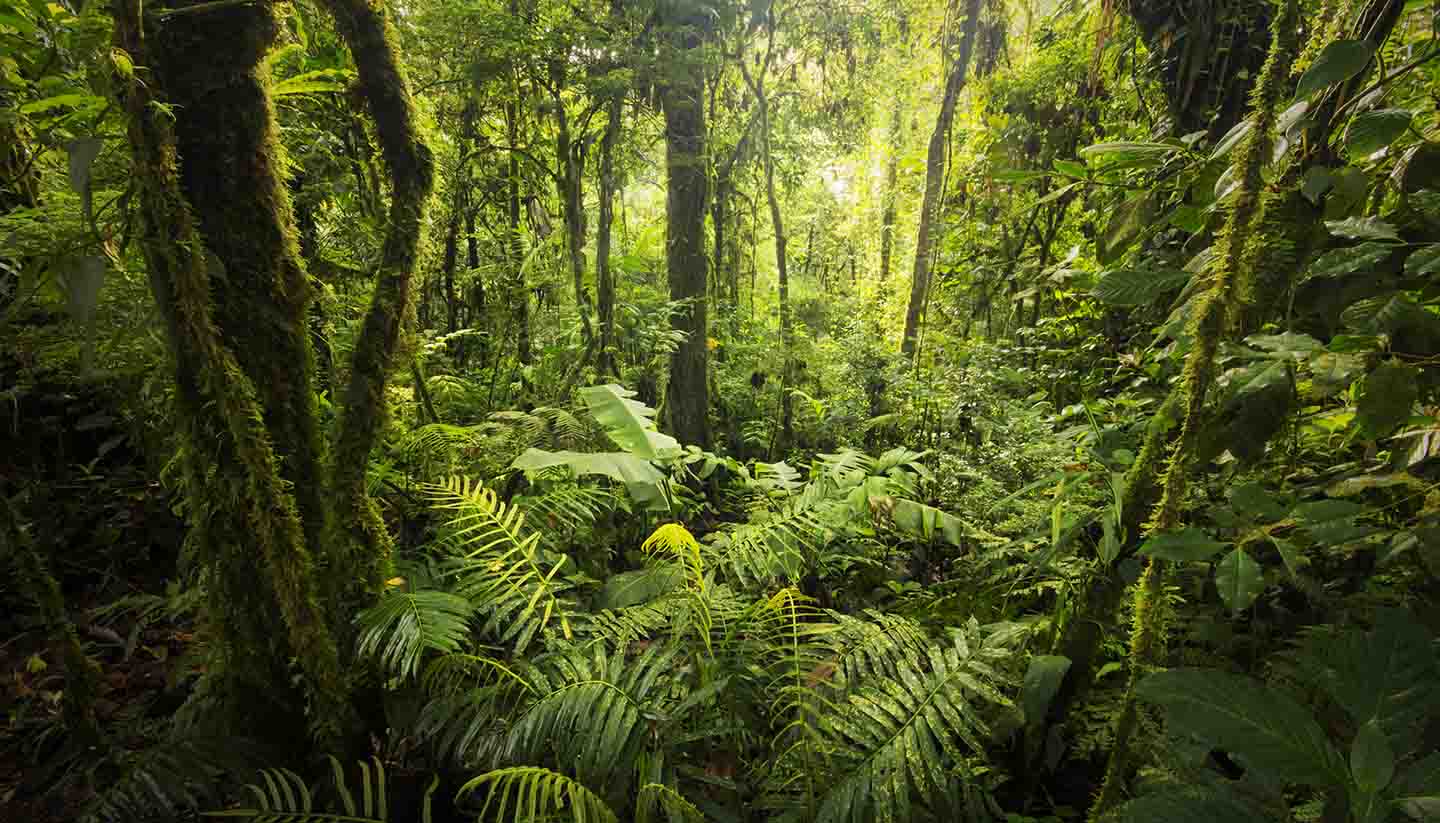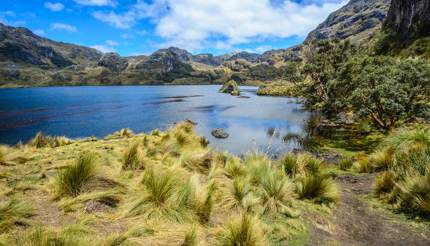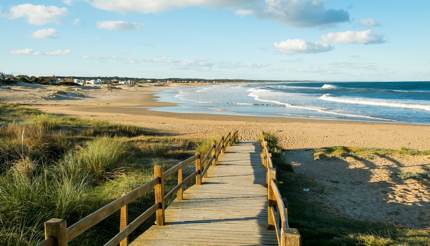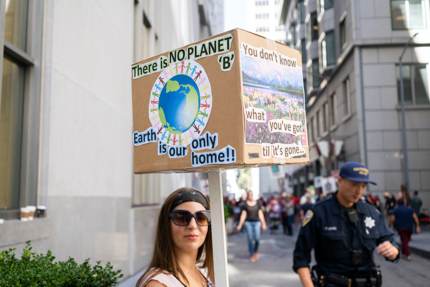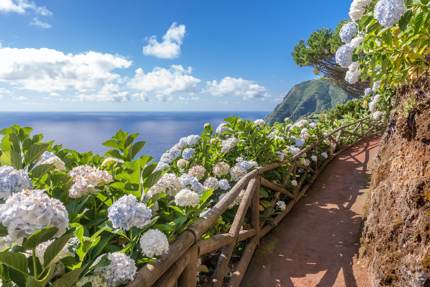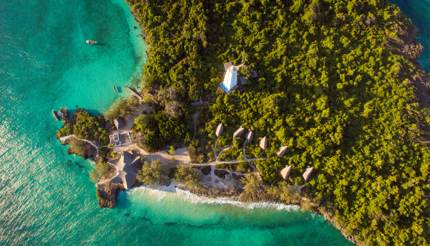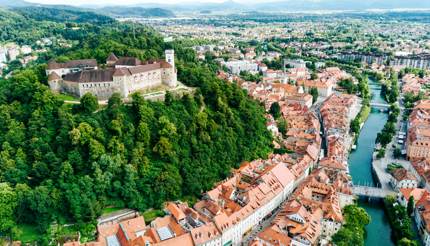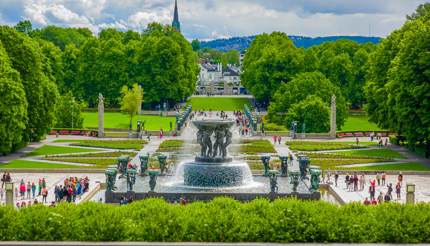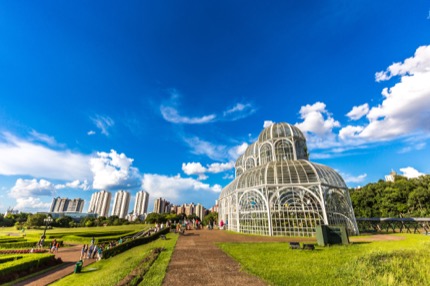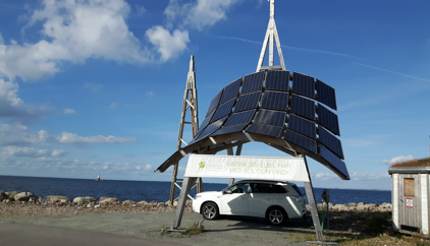From self-sufficient villages to pioneering national parks, we round up 20 of the world's greenest destinations
As each passing year continues to break heatwave records due to global warming, living a sustainable, eco-friendly lifestyle is becoming increasingly important. We list 20 of the greenest destinations on Earth and discuss how the rest of the world can take a leaf from their biodegradable book.
20. Torri Superiore, Italy
Thought to date from the late 13th century, the medieval village complex of Torri Superiore in the Ligurian Alps is an eco-village that has been restored by its small community using sustainable wood, environmentally friendly paint and local materials. With about 20 permanent residents who live alongside their livestock, the commune is a triumph of sustainable living where water is heated through solar panels, the toilets are compostable, and food is grown on-site in permaculture gardens and fruit orchards. Visitors can stay in the village, learning about sustainable living and taking part in work exchange holidays.
19. Ecuador
The first country to recognise the rights of nature in its constitution, Ecuador is regularly named as the World’s Leading Green Destination at the World Travel Awards.
As well as laying claim to the wildlife-rich Galapagos Islands, Ecuador boasts a huge chunk of rainforest and is one of the last bastions of South American cloud forest. The country is not without its environmental issues (tempting oil reserves lie beneath the rainforest are slowly being tapped by the current government), but it remains one of the most biodiverse destinations on the planet and offers some of the best eco-lodges in South America.
18. Bristol, England
When it comes to radical thinking and ethical living, both the council and residents of Bristol deliver. The 2015 European Green Capital continues to use less energy per household and push towards its carbon-neutral targets by 2030.
The city also has various programmes to fight food waste. Businesses and residents are encouraged to reduce food waste while an army of volunteers gets ready to rescue food or captured it for recycling or composting.
17. Uruguay
Being the first country in the world to legalise weed, you may think that going green takes on another meaning for the people of Uruguay, but in actuality, this South American nation is a haven of environmental progress. Wind, water and agricultural waste have generated 94.5% of Uruguay’s electricity since 2016, and the government plans to institute a 100% renewable initiative by 2021. Uruguay’s push for sustainable living is also evident in its population. Its hippie enclaves, like Cabo Polonio on the coast, are also wooing tourists with a back to basics lifestyle of no electricity, no roads and communal candlelit meals.
16. San Francisco, USA
San Francisco has long been a haven for progressive social movements, but today it’s also famous for being the most eco-friendly city in America. The first city in the US to ban single-use plastic bags in 2007, San Fran has the highest per-capita prevalence of eco-friendly services, which includes green architects, engineers and cleaning services. While lofty ambitions of being waste-free by 2020 have been pushed back, San Francisco is still the leader in the United States when it comes to sustainable living and recycling with an astonishing 77 per cent of its municipal waste recycled.
15. Rwanda
If you’re visiting Rwanda on the last Saturday of the month, then you better pack a litter picker. Why? Because your trip will coincide with umuganda, a community day of national housekeeping where every citizen (including the president) goes out to clean the country. This monthly spruce up and the ban on plastic bags make Rwanda one of the cleanest nations on the planet.
But that’s just the tip of this African gem’s eco iceberg. Thanks to its conservation targets, Rwanda’s endangered mountain gorillas, along with lions and rhinos, are thriving. While they may not have completed everything set out 20 years ago in the plan, Rwanda has embarked on a massive drive for reforestation, while setting up the ‘Green Climate’ investment fund to support its eco-efforts.
14. Azores Islands, Portugal
The autonomous Portuguese archipelago made up of nine volcanic islands has been named in the Sustainable Destinations Global Top 100 multiple times. The Azores have earned their green credentials with a host of policies tapping into renewable energies – wind, geothermal and biomass. One of its islands, Graciosa, now runs on 100% renewable energy.
Protecting the local wildlife and environment is also essential to islanders. The region has 60 marine protected areas and four UNESCO Biosphere Reserves. There is also a raft of well-regulated snorkelling, diving and whale-watching trips that offer the best ways to experience the local marine life, from dolphins, turtles to sperm whales.
13. The Isle of Eigg, Scotland
Floating off the coast of mainland Scotland, The Isle of Eigg is owned by a consortium of local residents, the Highland Council and the Scottish Wildlife Trust, who pooled their resources together in 1997 to buy the island. Since signing the deeds, Eigg’s empowered owners have established the world’s first completely renewable electricity grid (using energy from the sun, water and wind), and developed a sustainable ecotourism industry. The Island’s infrastructure and policies ensure the island remains a haven for wildlife such as Minke whales, golden eagles and cuckoo.
12. Freiburg, Germany
After being heavily bombed in World War II, this small German town rebuilt itself from the ground up with the environment in mind, implementing considered planning and engineering strategies to ensure people’s daily needs are within walking or biking distance.
In addition, Freiburg consolidated its green status with local laws requiring that new houses use no more than 65 kilowatt-hours of heating energy per square meter per year, 10 kilowatt-hours lower than the national standard. Solar panels are present on almost every building in Freiburg. In fact, Freiburg’s ‘New Energy Homes’ create more solar energy than they consume, earning up to 6,000 euros per year for the residents.
11. Chumbe Island
Thailand take heed – this is how island tourism should be done. Privately managed by a non-profit organisation (the only one of its kind in Africa), tiny Chumbe island is breaking ground when it comes to marine conservation. Just 32km (20 miles) off the coast of mainland Tanzania, Chumbe’s shallow turquoise waters are home to one of the most spectacular reefs in the world.
Only a select few guests are permitted to visit the island and stay overnight at any one time. Seven rustic eco-lodges are situated within the island’s forest reserve, offering a unique off-grid experience with no Wi-Fi, no TV and peace away from the bustling, polluted mainland.
10. Ljubljana, Slovenia
In the past decade, Slovenia’s capital city has dramatically improved its environmental sustainability standards. Ljubljana has become the first capital in the EU to take part in the ‘zero waste’ programme and has worked tirelessly to create and preserve its public green areas which make up a third of the city’s territory.
The city centre, once dominated by cars, has shifted its focus to pedestrians and cyclists. The results? They won the title European Green Capital in 2016 and are now continuing to push towards a sustainable zero waste tourism initiative that will see drastic improvements to the country’s sustainability and eco-friendly industries.
9. Singapore
Singapore is so involved in the green movement that its Public Utilities Board has a highly efficient strategy to catch rainwater, investing millions into desalination plants and also reclaiming wastewater (sewage). That’s right – known as NEWater, it is recycled water that uses advanced membrane technologies and ultra-violet disinfection to produce high-quality drinking water. It is mainly used by industries now and added to the reservoirs to blend with raw water during dry periods.
Apart from water, Singapore looks to increase buildings that hold the Green Mark certification from 25% to 80% by 2030. The Green Mark program encourages the use of materials like solar panels, high-efficient cooling units and rainwater harvesting to help reducing carbon emissions.
8. Helsinki, Finland
Helsinki has cars in its crosshairs. By 2025, Finnish authorities hope to make car ownership a thing of the past and, in the process, want to change the way we travel forever. At least that is the plan. Technology lies at the heart of this transport revolution: at the tap of a finger, smartphone users can summon on-demand buses, which use algorithms to form the best routes for their passengers. Add that to the city’s ubiquitous nature reserves and stringent eco policies, and you have one of the greenest capitals in Europe.
7. Oslo, Norway
With sustainability as a way of life for Norwegians, no one was surprised when Oslo was crowned the European Green Capital in 2019. The city has a unique ‘Climate Budget’ initiative which requires the city council to only approve spending plans that have a realistic chance of reducing greenhouse gas and driving to reach its carbon-neutral goal by 2050.
Oslo’s eco-friendly neighbourhood Vulkan also serves as an excellent example of the city’s push for sustainable living. The area is built on the idea of shared resources, with a self-sufficient solar energy system that directs excess energy to heat hot water and homes. When more energy is needed in the winter it can be drawn from geothermal wells 300m (984ft) below ground.
6. Iceland
Iceland is a land of staggering natural beauty. Located on the mid-Atlantic ridge, it’s also one of the most tectonically active places in the world, with over 130 volcanoes, as well as numerous hot springs, glaciers and waterfalls. This abundance of natural hydro and geothermal resources supplies nearly 100% of the country’s electricity consumption and 85% of its total primary energy consumption, making Iceland the world’s largest green energy producers per capita and an example that the rest of the world are attempting to emulate.
5. Switzerland
When it comes to environmental protection, the Swiss are militant – and who can blame them? They want to preserve their wonderful, snow-shrouded mountains, rosemary-coloured hills, trickling streams and world-class skiing. They’re also fields ahead in the race to be green with policies such as the ‘polluter pays’ scheme where residents must buy special bin bags to put their trash in.
Consistently ranked number one in the world for sustainable tourism in the Global Travel and Tourism Competitiveness Reports, Switzerland continues to reduce emissions, embrace renewable energy and improve water quality.
4. Curitiba, Brazil
Only decades ago, Curitiba was no more than an outpost for travellers moving between São Paulo and its surrounding agricultural regions, but it has grown to become one of the most environmentally-friendly cities in the world. Noteworthy achievements of the Paraná capital include the development of an ultra-efficient bus system serving 85% of its residents and a Green Exchange Program where its participants exchange recyclable material for food.
As well as reducing its energy consumption and food waste, over the years Curitiba has implemented key strategies to protect the city from natural disasters. For instance, to prevent the city from flooding, a green belt was constructed on the city’s outskirts, sustainably mown by grazing sheep. The sheep manure and the wool are collected and sold by local farmers, enabling them to profit from these eco-friendly policies.
3. Chile
This South American country has been leading the way in sustainable adventure and eco-tourism for several years. The country has 41 national parks, 26 natural reserves, 20 forest reserves and 18 natural monuments, which altogether cover an area of 18 million hectares, about 20% of its territory. To protect these places, there is a national system known as SNASPE in place to care for its landscapes and ecosystems, while sustainability certifications are also given to hotels and tour operators that work to meet the standards of environmental protection.
Chile is also home to South America’s first geothermal plant and the government has been launching large-scale solar power plants and wind farms. At the end of 2019, 22% of Chile’s energy comes from renewable sources. Officials hope to make that 90% by 2050 by utilising all the clean natural resources at their disposal.
2. Copenhagen, Denmark
“The bike is a Dane’s best friend” as the saying goes in Denmark. Nine out of ten people in Denmark own a bike and they cycle 1.6km (1 mile) a day on average. In Copenhagen, there are about 400km (249 miles) of cycle paths – all clearly separated from car lanes and sidewalks.
On two wheels you’ll pass LEED Platinum-certified buildings, restaurants that serve organic produce, and solar-powered picnic boats that bob along the canals. But the best sustainability project has to be Copenhill, a plant that converts waste to energy supplying electricity to 30,000 houses and is also designed to be a playground – there is an artificial 9,000-metre-squared ski and snowboard terrain running from the roof of the building to its base.
1. Sweden
Home of Greta Thunberg, the inspiring environmental activist, Sweden is a clear leader in renewable energy – over 54% of its energy comes from renewable sources and the country is set to reach its 100% target by 2040, 10 years earlier than the targets set by other European nations.
Sustainability was a top focus when the authority regenerated old neighbourhoods. For examples, Hammarby Sjöstad in Stockholm has smart electric grids and a network of underground chutes that take household waste to a collection station, while Västra hamnen in Malmö is a carbon-neutral neighbourhood that uses a thermal energy storage system (pumped by wind energy) to heat homes in winters.
But it isn’t all modern-day innovation. 63% of Sweden is forest and one of Sweden’s constitutional laws, allemansrätt (freedom to roam) grants citizens unwavering access to all of the region’s countryside, whether it be privately or publicly owned – perfect if you really want to immerse yourself in nature.
This article was updated on 15/04/2020.
If you liked this article, you might also like:
